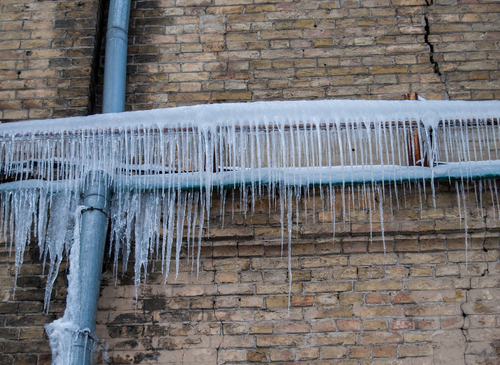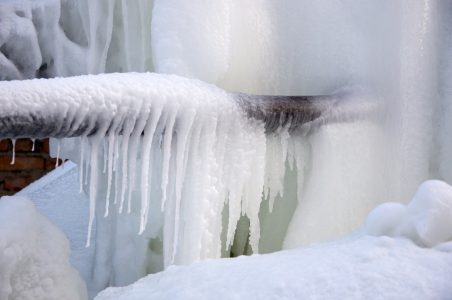What're your opinions on Helpful Tips to Prevent Frozen Pipes this Winter?

Winter can wreak havoc on your pipes, especially by freezing pipelines. Right here's how to stop it from taking place and what to do if it does.
Introduction
As temperature levels decrease, the risk of icy pipes boosts, possibly bring about expensive repairs and water damages. Understanding just how to avoid frozen pipelines is critical for home owners in cold environments.
Prevention Tips
Protecting prone pipelines
Cover pipes in insulation sleeves or use warm tape to secure them from freezing temperature levels. Focus on pipes in unheated or exterior areas of the home.
Home heating methods
Maintain indoor areas appropriately heated up, particularly locations with plumbing. Open cupboard doors to enable cozy air to circulate around pipes under sinks.
Exactly how to recognize frozen pipelines
Look for lowered water flow from faucets, unusual odors or noises from pipes, and noticeable frost on revealed pipes.
Long-Term Solutions
Structural modifications
Think about rerouting pipes away from outside wall surfaces or unheated areas. Add added insulation to attic rooms, cellars, and crawl spaces.
Updating insulation
Buy top notch insulation for pipes, attic rooms, and wall surfaces. Correct insulation aids preserve consistent temperatures and reduces the threat of frozen pipes.
Protecting Outdoor Plumbing
Yard tubes and outside faucets
Disconnect and drain yard tubes prior to winter. Install frost-proof faucets or cover exterior faucets with insulated caps.
Understanding Frozen Pipes
What creates pipes to freeze?
Pipes ice up when revealed to temperature levels listed below 32 ° F (0 ° C) for expanded periods. As water inside the pipes ices up, it broadens, putting pressure on the pipe wall surfaces and possibly triggering them to burst.
Risks and damages
Frozen pipelines can cause supply of water interruptions, residential or commercial property damage, and expensive repairs. Ruptured pipelines can flooding homes and trigger substantial architectural damage.
Indications of Frozen Pipeline
Recognizing icy pipelines early can stop them from breaking.
What to Do If Your Pipes Freeze
Immediate activities to take
If you suspect frozen pipes, keep taps open up to relieve pressure as the ice melts. Utilize a hairdryer or towels taken in warm water to thaw pipes gradually.
Final thought
Preventing frozen pipelines requires positive procedures and quick actions. By understanding the causes, indications, and preventive measures, home owners can shield their plumbing during cold weather.
5 Ways to Prevent Frozen Pipes
Drain Outdoor Faucets and Disconnect Hoses
First, close the shut-off valve that controls the flow of water in the pipe to your outdoor faucet. Then, head outside to disconnect and drain your hose and open the outdoor faucet to allow the water to completely drain out of the line. Turn off the faucet when done. Finally, head back to the shut-off valve and drain the remaining water inside the pipe into a bucket or container. Additionally, if you have a home irrigation system, you should consider hiring an expert to clear the system of water each year.
Insulate Pipes
One of the best and most cost-effective methods for preventing frozen water pipes is to wrap your pipes with insulation. This is especially important for areas in your home that aren’t exposed to heat, such as an attic. We suggest using foam sleeves, which can typically be found at your local hardware store.
Keep Heat Running at 65
Your pipes are located inside your walls, and the temperature there is much colder than the rest of the house. To prevent your pipes from freezing, The Insurance Information Institute suggests that you keep your home heated to at least 65 degrees, even when traveling. You may want to invest in smart devices that can keep an eye on the temperature in your home while you’re away.
Leave Water Dripping
Moving water — even a small trickle — can prevent ice from forming inside your pipes. When freezing temps are imminent, start a drip of water from all faucets that serve exposed pipes. Leaving a few faucets running will also help relieve pressure inside the pipes and help prevent a rupture if the water inside freezes.
Open Cupboard Doors
Warm your kitchen and bathroom pipes by opening cupboards and vanities. You should also leave your interior doors ajar to help warm air circulate evenly throughout your home.

Hopefully you enjoyed our post on How to Prevent Your Pipes From Freezing. Thank you for taking a few minutes to browse our post. If you please take a moment to promote this page if you enjoyed reading it. Kudos for being here. Don't forget to check our website back soon.
Book Your Installation